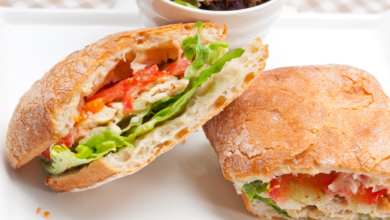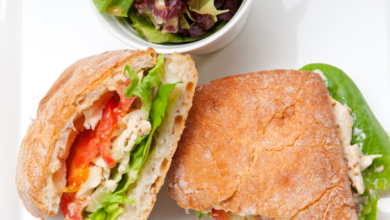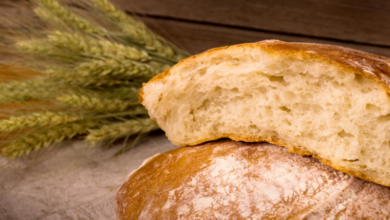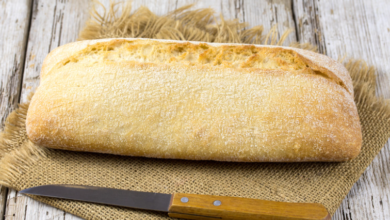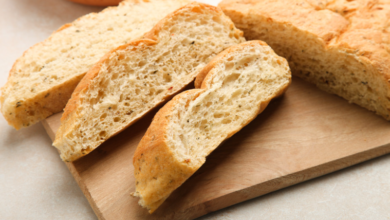Does ciabatta bread rise in the oven? Here’s the answer!
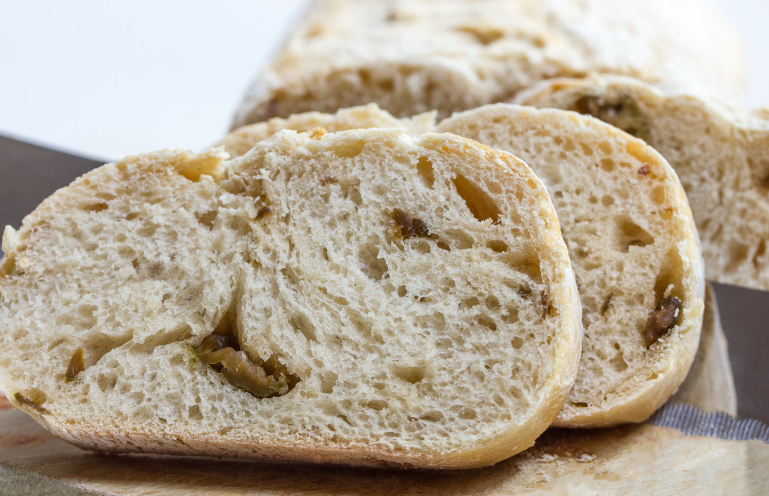
What To Know
- The high heat of the oven creates a steamy environment, which helps to expand the dough and create the desired crust.
- If your oven does not have a steam function, you can create steam by placing a shallow pan of water on the bottom rack of the oven.
- Use a steam function or place a pan of water on the bottom rack of the oven.
Ciabatta bread, with its airy, open crumb and crispy crust, is a beloved staple in many kitchens. But one question that often arises is: does ciabatta bread rise in the oven? The answer is a resounding yes! The unique baking process of ciabatta allows it to achieve its characteristic height and airy texture.
The Science Behind Ciabatta’s Rise
Ciabatta dough is made with a high hydration ratio, meaning it contains a large amount of water relative to flour. This water helps to create steam during baking, which expands the dough and creates the large, irregular holes that are a hallmark of ciabatta.
In addition, ciabatta dough is often mixed and kneaded less than other types of bread dough. This allows the gluten strands to remain weak, which further contributes to the open crumb structure.
The Oven’s Role in Ciabatta’s Rise
The oven plays a crucial role in the rising process of ciabatta bread. The high heat of the oven creates a steamy environment, which helps to expand the dough and create the desired crust.
Additionally, the oven’s heat helps to set the gluten strands, which gives ciabatta bread its distinctive chewy texture.
How to Ensure Ciabatta Bread Rises in the Oven
To ensure that your ciabatta bread rises properly in the oven, follow these tips:
1. Use a High-Hydration Dough
The hydration ratio of ciabatta dough should be around 70-80%. This will provide enough water to create steam during baking.
2. Mix and Knead Lightly
Avoid overmixing and overkneading ciabatta dough. This will weaken the gluten strands and promote a more open crumb structure.
3. Proof Properly
Before baking, allow the ciabatta dough to proof for a long period of time. This will give the yeast time to ferment and produce the gas that will help the bread rise.
4. Bake at a High Temperature
Ciabatta bread should be baked at a high temperature, around 450-500°F (230-260°C). This will create a steamy environment and help the bread to rise quickly.
5. Use Steam
If your oven does not have a steam function, you can create steam by placing a shallow pan of water on the bottom rack of the oven.
Troubleshooting Ciabatta Bread That Doesn’t Rise
If your ciabatta bread is not rising in the oven, there are a few possible reasons:
1. Incorrect Hydration Ratio
The dough may not have been hydrated enough. Add more water to the dough and try again.
2. Overmixing or Overkneading
The dough may have been overmixed or overkneaded. This will weaken the gluten strands and prevent the bread from rising properly.
3. Insufficient Proofing
The dough may not have been proofed for long enough. Allow the dough to proof for a longer period of time before baking.
4. Low Oven Temperature
The oven may not have been hot enough. Increase the oven temperature and try again.
5. Lack of Steam
The oven may not have been steamy enough. Use a steam function or place a pan of water on the bottom rack of the oven.
Wrap-Up: Achieving the Perfect Ciabatta Rise
By following the tips outlined in this guide, you can ensure that your ciabatta bread rises beautifully in the oven. Remember to use a high-hydration dough, mix and knead lightly, proof properly, bake at a high temperature, and use steam. With a little practice, you’ll be able to create delicious, airy ciabatta bread that will impress your family and friends.
Questions You May Have
1. Can I use bread flour for ciabatta bread?
Yes, you can use bread flour for ciabatta bread. Bread flour has a higher protein content than all-purpose flour, which will give the bread a chewier texture.
2. What is the ideal proofing time for ciabatta dough?
The ideal proofing time for ciabatta dough is 12-18 hours. This will give the yeast time to ferment and produce the gas that will help the bread rise.
3. Can I make ciabatta bread without a steam function in my oven?
Yes, you can make ciabatta bread without a steam function in your oven. Place a shallow pan of water on the bottom rack of the oven to create a steamy environment.
